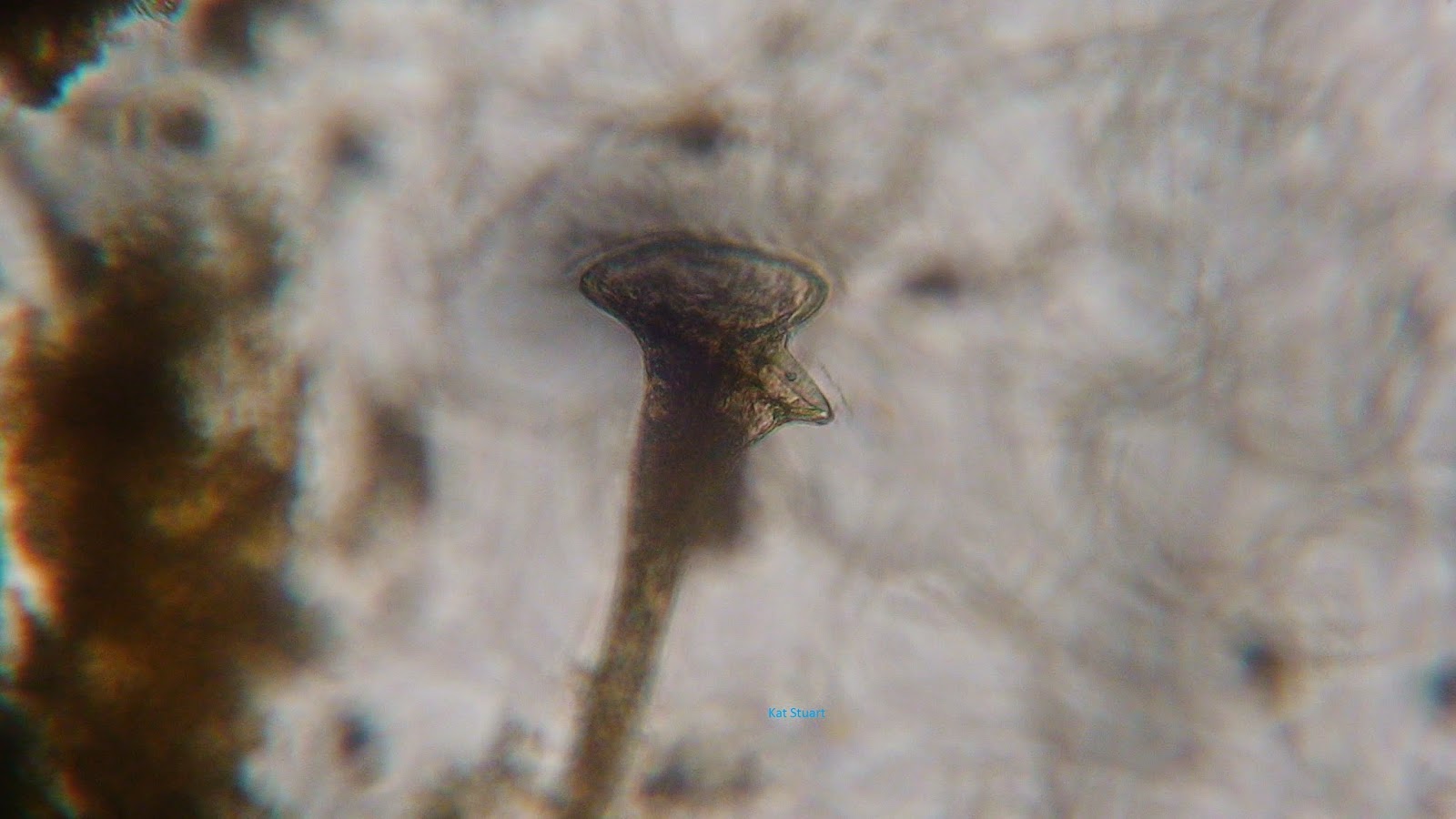Below are diatoms of genus Pinnularia (Canter-Lund and Lund, 1995 p.118 Fig. 207). The biggest one (Diatom A) was seen moving by moving water through the tube like body and propelling itself left or right.
Many were idle and floating by themselves, some of which (pictured below) were stacked for better structural protection from predators.
This protist of genus Stentor was spotted near the bottom of the tank (MicrobeWiki, 2014). It uses a filter feeding technique to bring food particles to it. This two headed Stentor was attached to a decaying stem.
This un-identified rotifer was spotted holding onto and spinning around the photosynthetic plant Amblestegium varium (McFarland, 2014).










